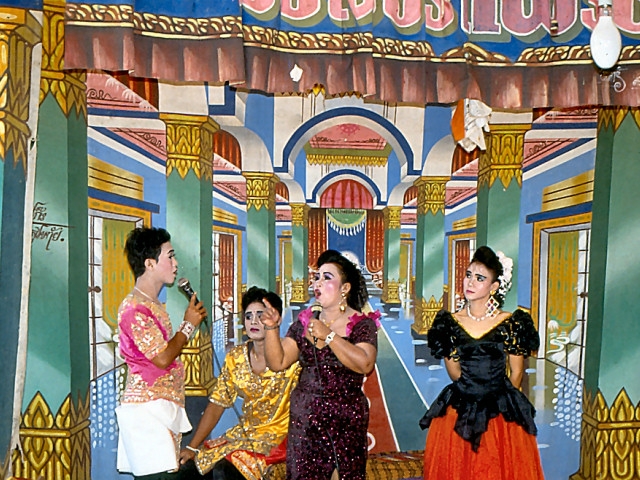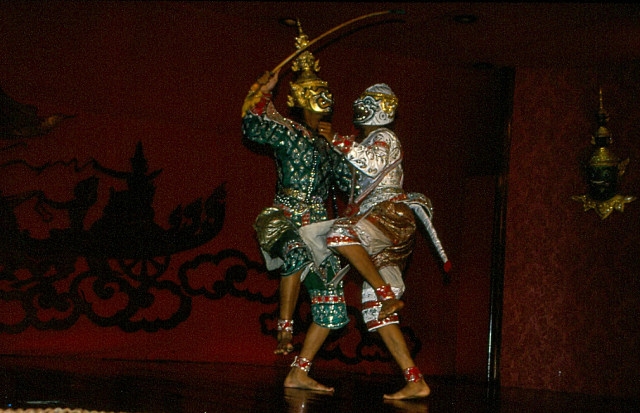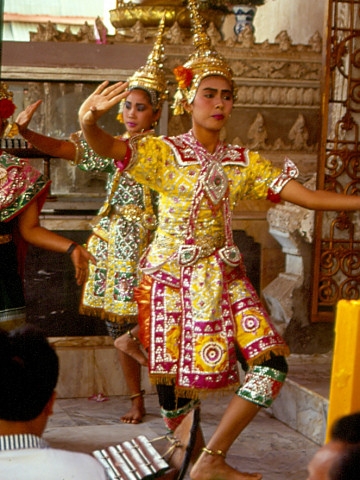Theatre and Dance
Destination:
ThaiInfo
Welcome to Amazing Thailand
Total Page Views for ThaiInfo: 3,121,287 - Views this week: 3,121,287 |
|
| The beginnings of dance theatre in Thailand were during the 14th century when dancers and musicians from the court of the Khmer kings were brought to Ayutthaya after the conquest of Angkor. However, only in the 19th century a long time after the decline of the Ayutthaya Empire, did it reach its height. The ruling King Rama II, was one of the greatest poets of his time and composed amongst others, numerous significant versions of classical dramas and was committed to the revival and promotion of the dance theatre. |  |
After the political disempowerment of the king in 1932 many theatre groups had to get by without the necessary support and finally had to give up their artistic activities.
Nowadays the classical Thai dance theatre is limited to a couple of performances per year from the “department of fine arts - division music and drama” in the National Theatre of Bangkok. Furthermore, big hotels organize so-called “Kodak shows” for foreign tourists in which short scenes from classical dramas are played.
|  |
| The masked play khon is the oldest and strictest form of Thai drama which is performed traditionally only by male actors. Their faces are hidden behind artistically designed masks symbolizing the various characters. Accompanied by the dynamic rhythm of the orchestra pi pong consisting of flutes, drums, cymbals, gongs and xylophones. They usually play battle scenes. |  |
| Lakhon nai, the dance theatre of the royal court had developed from lakhon nok (literally translated ‘outside theater’) for the general public at the end of the 18th century. It is played with sumptuous costumes made from expensive silk fabrics and with mask-like painted faces. Most of the performers are women who lend the play an air of relaxed elegance with their slow and graceful dancing steps and the bent backwards bent arms and fingers. Episodes of the Ramakien are performed preferably. |  |
| The likay is a traditional lively folk theatre thats been especially developed in rural areas into a popular form of entertainment. Plays full of tearful and melodramatic happenings find the undivided attention of the masses. |  |

